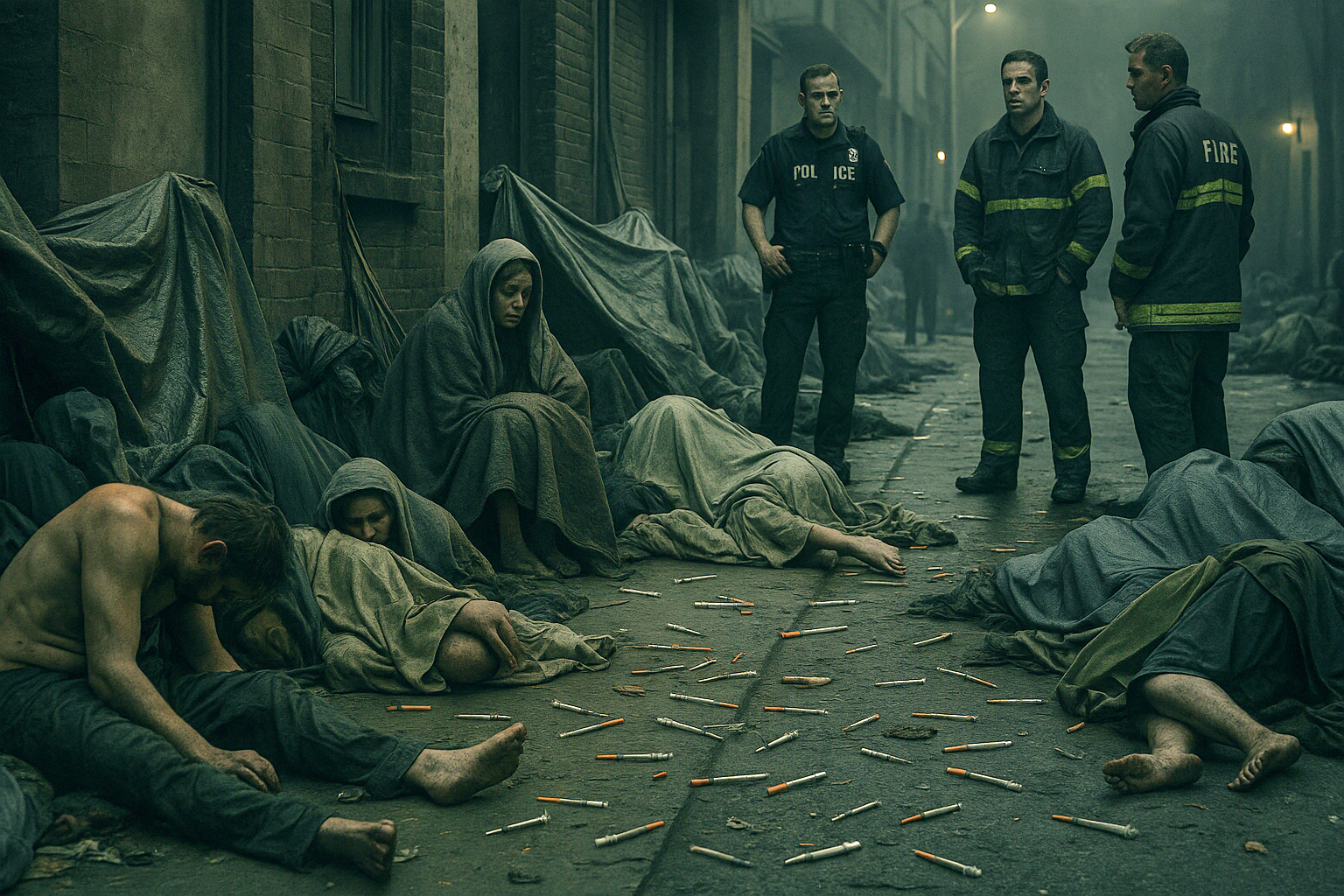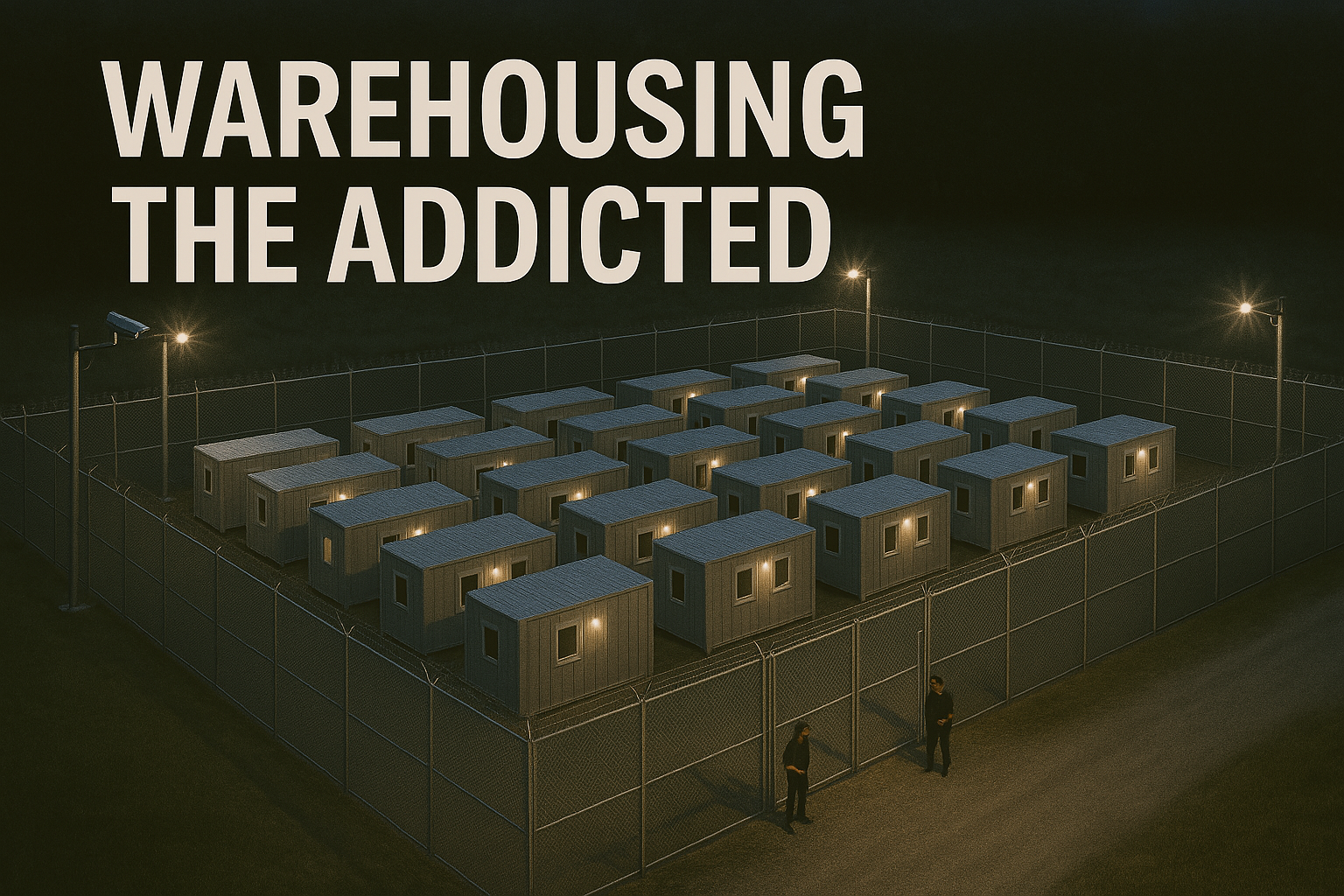Quote: “We’re building prisons with clean needles and calling it compassion.”
Chapter 8: Warehousing the Addicted
For all the billions spent and banners flown in the name of “saving lives,” the lived reality for many addicts is far from hopeful. They aren’t being helped. They’re being stored.
The modern addiction response has devolved into containment. People are shuffled into shelters, supervised consumption sites, and low-barrier housing with few expectations and fewer pathways out. If the goal was recovery, we’ve missed the mark. If the goal was management—we’ve succeeded.
From Housing First to Housing Forever
The Housing First model began with good intentions: get people indoors, then help them stabilize. But in many places, the “then” never comes. Support services are stretched thin or nonexistent. Residents overdose repeatedly. Dealers roam the halls. Police rarely intervene.
This isn’t recovery. It’s warehousing.
Supervised Consumption Sites: Lifesaving, But Not Life-Giving
Safe injection sites do save lives in the short term. They prevent overdose deaths and reduce disease transmission. But they don’t fix addiction. They are not meant to.
Yet in many cities, they have become the centerpiece of the response—visible proof that something is being done, while deeper issues go ignored.
Shelters as Holding Tanks
Many shelters now operate 24/7, offering beds, meals, and little else. Some provide harm reduction supplies. Others look the other way. Staff burnout is common. Violence is rising.
Residents cycle in and out, familiar faces in an endless loop. Some want out but find no doors. Others accept it as life’s last stop.
The Cost of Containment
This isn’t cheap. Governments pour millions into housing programs, emergency responses, nonprofit funding, and healthcare costs. But there’s no long-term vision. No plan to get people out of the system—only to keep them alive within it.
Compassion without structure becomes cruelty. A place to die slowly is not a substitute for a chance to live fully.
When the System Needs You Sick
Here’s the truth few will say: some of these programs work best when you don’t. When you stay addicted, you remain eligible. When you stay housed but unhealed, the funding continues. Progress is hard to track. Dependency is not.
Addiction has become its own industry. And in that industry, the warehouse is the business model.
No Exit, No Expectation
Where are the recovery farms? The long-term programs with purpose and dignity? The vocational rehab? The trauma-informed care?
Instead, we fund what’s politically safe, photograph what looks humane, and ignore what hurts to confront.
In Chapter 9, we’ll look at a question too few dare ask: if governments are forced to choose between the addicted and the average citizen in need—who gets protected?

